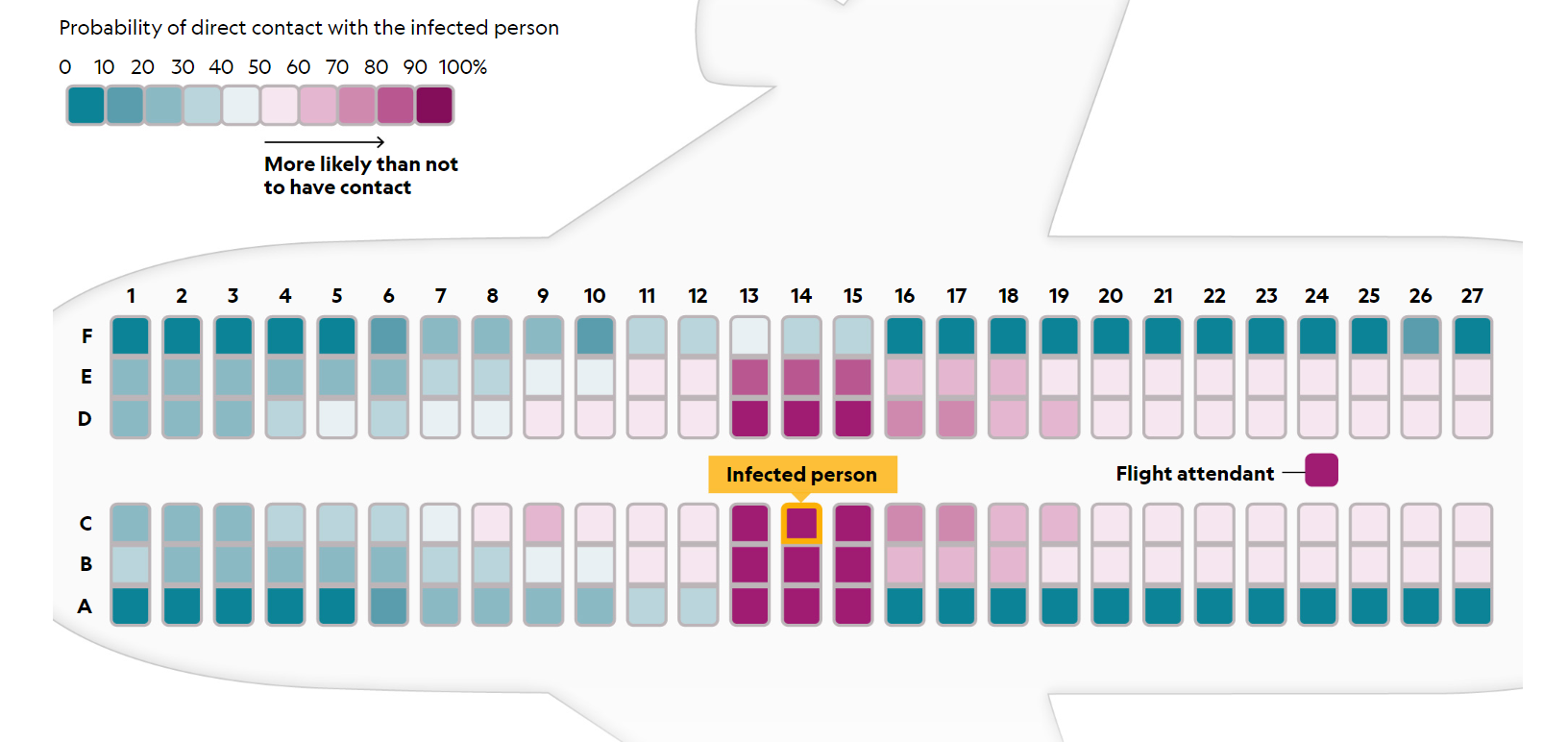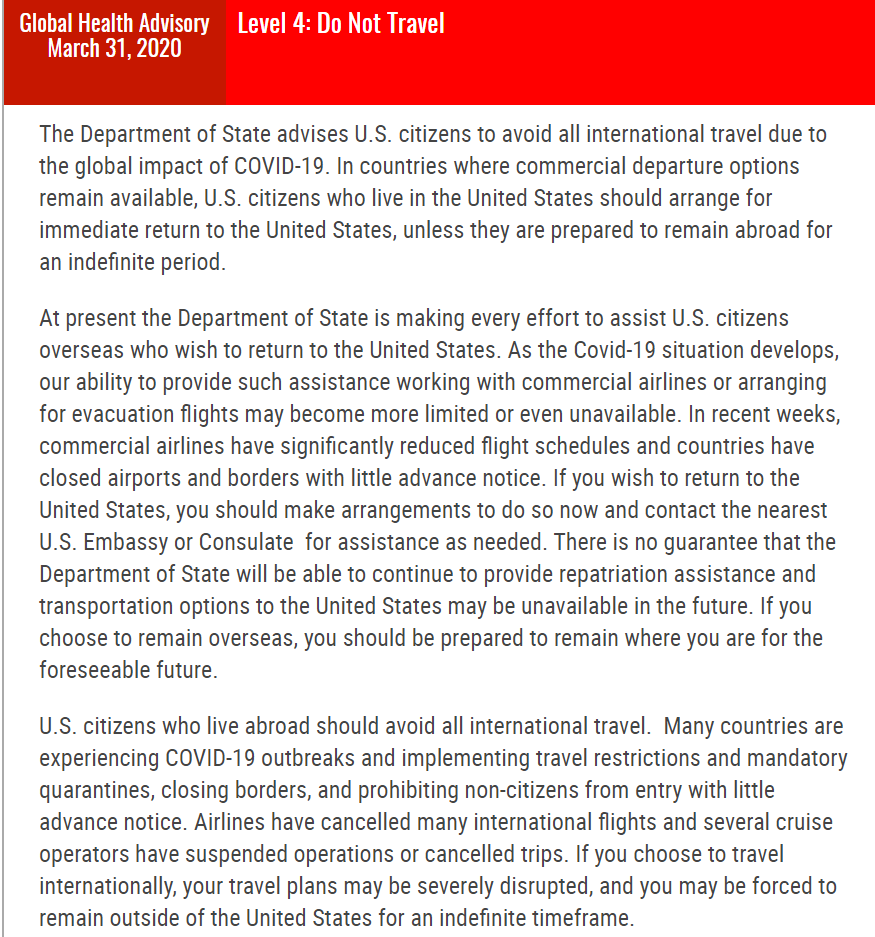Do I Stay or Do I Go?

Currently, international students are facing the difficult decision of whether to tough it out in the French lockdown or pack up and head home. A multitude of factors must go into their final decisions, from the heightened risk of infection on airplanes, to the merits and risks of being with family, to the time difference in class, to the various healthcare systems.
The Peacock Plume is takes a deep dive into some of our American students' most important questions so you can be better prepared to make a decision.
Am I more likely to catch the virus in France, or the United States?
The answer is more complicated than you might think. According to Aljazeera's most recent count, the United States has experienced 337,638 cases, while France has experienced 93,780.
However, the population of the United States is five times larger than that of France. These numbers would make it seem that the higher percentage of people who have caught COVID-19 is higher in France.
On the other hand, where the population is distributed in a country makes a huge difference in the spread of the virus. The United States' larger landmass is mostly rural, where people live further apart than in large cities.
The virus is infecting a high percentage of people in US cities, but the slower spread in rural areas makes this unclear when we just look at the numbers. In either country, you are safer in the countryside, farther away from large groups of people, than in the city.
Another consideration is the extent of lockdown put in place. At present, both the French and American governments are asking residents to "shelter in place." For residents in France, this means that all non-essential businesses and facilities are closed and everyone must carry an "attestation de déplacement derogatoire ou professionel" (permission slip for essential errands or work) to leave their home.
In the United States, "shelter in place" is being defined on a state-by-state basis. The White House has offered guidance to states but it has not required any standardized measures. In practice, this has meant different approaches across the country.
Depending on your state, businesses and facilities that remain open will be different, as will penalties on non-essential trips. Closing non-essential businesses is essential since the coronavirus can remain infectious on surfaces for between two hours and nine days, depending on the material. France's approach, then, is more effective at keeping one from catching the virus. Still, following stricter precautions than your area requires is an option.
Is it worth the risk to fly home?
Image credit National Geographic
Let's set the record straight. The most dangerous parts of flying on a plane are the surfaces and your neighbors. If you're going to fly, the best way to address this is to wipe down any surface you have to touch with Lysol wipes or a bleach solution. You can find a list of products that kill the virus here.
The other major concern in flying on a plane is your neighbors. Luckily, the advisory of the US Department of State, who are against non-essential travel, is keeping flights less populated than usual. Nonetheless, there are still precautions you can take to remain safe. For one thing, the more people you are close to, the more likely you are to come in contact with fluids that spread the virus.
Picking a window seat as opposed to an aisle seat and avoiding getting up for the restroom are great ways to avoid contact with the most people. According to National Geographic, COVID-19 is only likely to spread to people within a row of an infected person unless that person is moving around. So, if you can, pick a seat with fewer people in front of and behind you.
Ultimately, the risk of infection does go up marginally if you fly on an airplane, but following best practices can greatly reduce your risk of infection.
If I don't fly home now, am I going to get stuck?
Photo credit Maddi Carpenter-Crawford via US Department of State
The short answer is yes, it is possible to be stuck in France. Most recently, the United States Department of State has issued a Level Four Health Advisory. The official text of this advisory does not say that US citizens will be barred from entering the United States. It does advise that commercial flights back to the States are becoming more and more limited as less people want to fly, and one may not be available in the near future.
Additionally, the advisory says that so far, the State Department has been providing assistance to citizens who wish to re-enter the United States in light of COVID-19. However, if the situation continues to escalate, their services will probably become more limited and may even stop for a time to keep employees safe.
In light of the Level Four Advisory, concern about being stuck in France over the summer is warranted. For many AUP students, visas will expire over those months. Your individual residency situation may be an important consideration.
Where would I be better off if I do get sick?
In terms of getting tested, France and the United States have similar statistics. While France has tested 224,254 people as of April 2nd, and the United States has tested 1,267,658, keep in mind that the US has a population about five times as large. The US's number of tests is also about five times as large, suggesting that testing is happening at a similar rate.
Yet, again, the United States is handling COVID-19 state by state, so your likelihood to be tested may depend on age, vulnerable status, symptoms, and employment depending on where you are.
With respect to treatment, the French have spoken little about how prepared their hospitals are to care for coronavirus cases while the United States has seen uproar over how unprepared hospitals are.
According to the Anchorage Daily News, some member hospitals of the Greater New York Hospital Association have been worried about exceeding their licensed capacity since March 16, when the article was published, or earlier. Extra beds are being put in break rooms and elective surgeries delayed to free up capacity for growing numbers of Coronavirus patients.
The under preparation of US hospitals in urban areas is a serious issue.
In the end, the decision to stay in France or go home to the United States is a very individual one.
We hope that we have answered as many of your questions as we could. We wish all our students, staff, and families safety and as much togetherness as is safe in these trying times.









